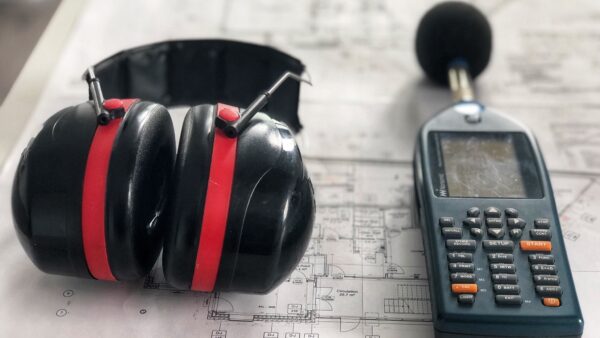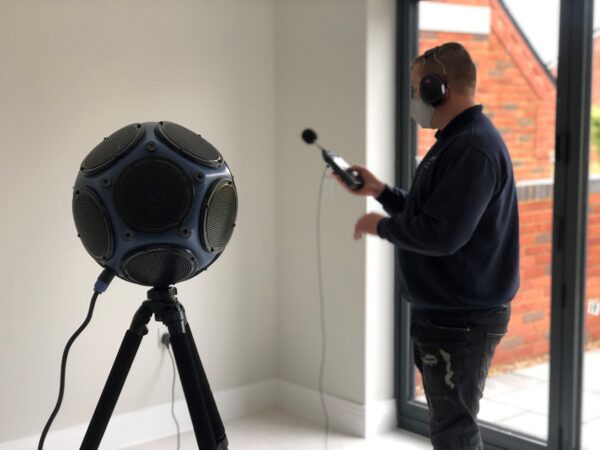Sound Proofing Walls to Pass Sound Testing
Many developers and builders phone us when they have failed their sound testing. There are many reasons for sound test failure, so we will try and summarise the main ones in this article and ways to sound proof walls in the following articles.
Sound transfer between walls and floors in dwellings is a common problem and its often down to poor-quality construction – this is often down to the contractors installing party walls and floors being on price work and not taking time and care during the construction process resulting in poor workmanship.

Excess sound transfer occurs as a result of airborne noise such as tv, music, voices. The airborne sound wave strikes the wall, and the pressure variations cause the wall to vibrate resulting in noise. This noise (vibrational energy) is transferred through the wall partition and radiated as airborne sound on the other side and can easily lead to sound test failure.
One common issue is often due to the lack of mass within the masonry wall construction. If lightweight (thermalite) blockwork has been used within the inner envelope and/or within the party wall, there is a much higher chance that the wall will fail a sound insulation test. The mass of a blockwork wall should be approx. 1850kg/m2; however a standard thermalite block may be as log as 450kg/m2, approx. one quarter of the recommend mass. Taking the above into account it’s critical that the required mass of the party wall is considered during the acoustic design process.
The 4 main elements of robust soundproof design
There are 4 main elements of soundproofing that need consideration throughout the process, all of which have a direct relation to the conduction and transmission of sound vibrations.
-
-
-
-
-
-
- Adding Mass to party walls: if the wall construction has a higher mass, the soundwave will struggle to vibrate the wall itself in order to permeate through it as it will have less movability, making it less probable for sound vibrations to travel through.
- Adding Decoupling to party walls: with decoupling, you can introduce a cavity between two layers of drywall and/or masonry which separates the two wall constructions. By doing this, a layer of air is created in-between the walls which provides good sound insulation.
- Adding Absorption to party walls: acoustic Insulation material such as RW3 mineral wool (min mass 45kg/m3). The material is placed into the wall in order to absorb these soundwaves, but the insulation is not compressed.
- Adding Damping to party walls: such as acoustic membrane within construction – often between plasterboards.
-
-
-
-
-

Getting the soundproofing design right from the word go, is key, and APT Sound Testing can help in all areas of acoustic design and sound insulation testing. For more information on our UKAS accredited sound testing, acoustic design services, or Sound Proofing of Walls please contact us at info@aptsoundtesting.co.uk or call us on 01525 303905. Alternately for more information on how to prepare for your precompletion sound testing please download our sound testing checklist, or visit our website at www.aptsoundtesting.co.uk
